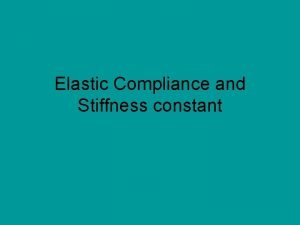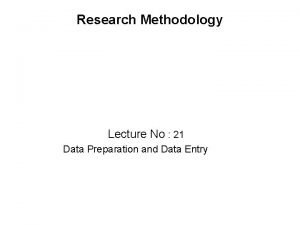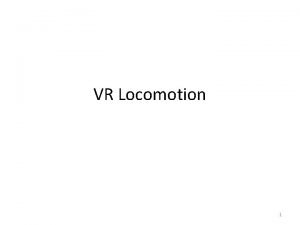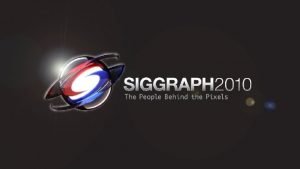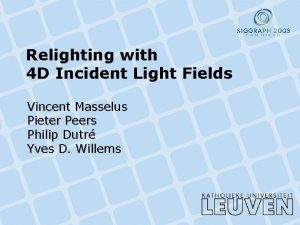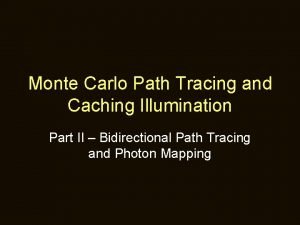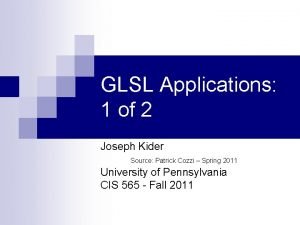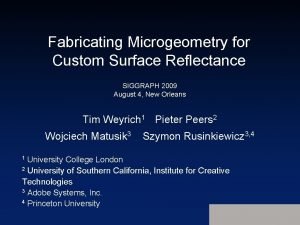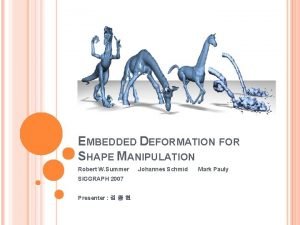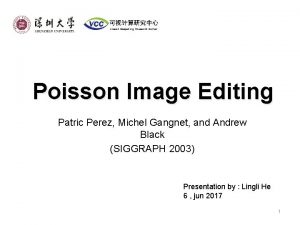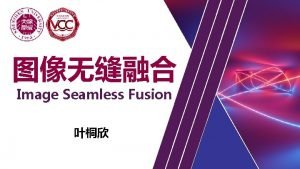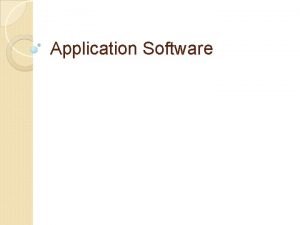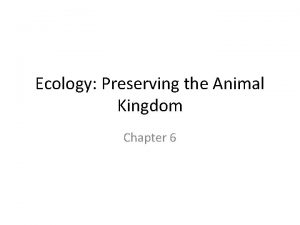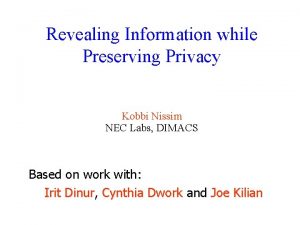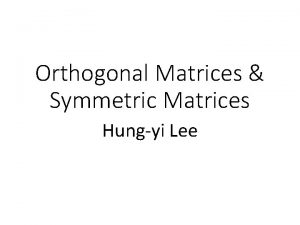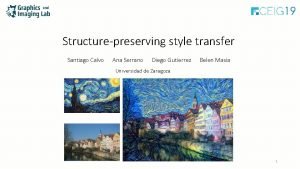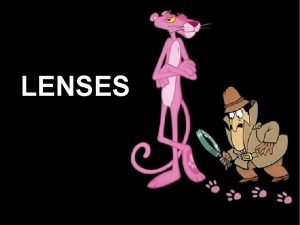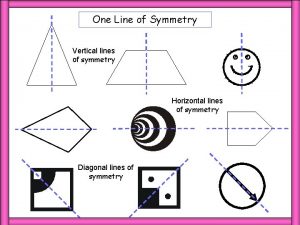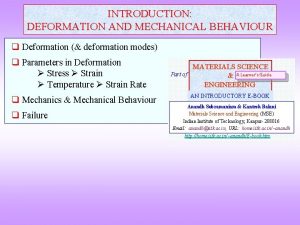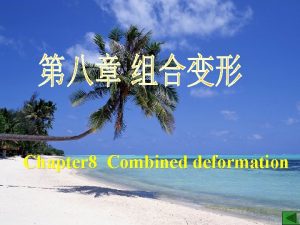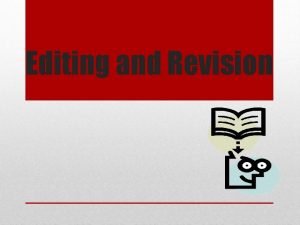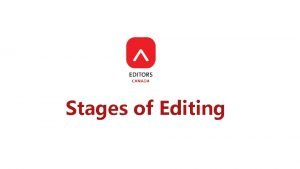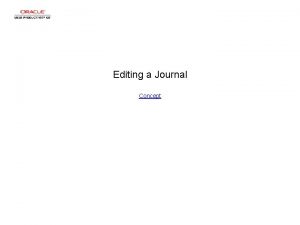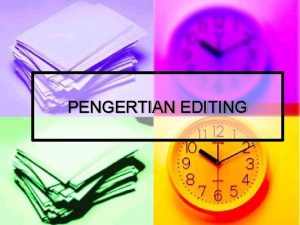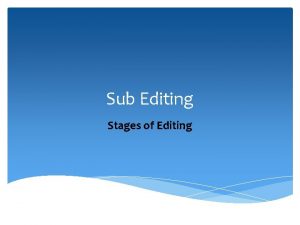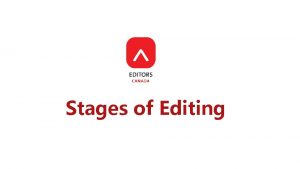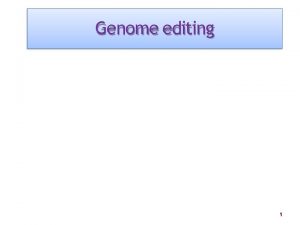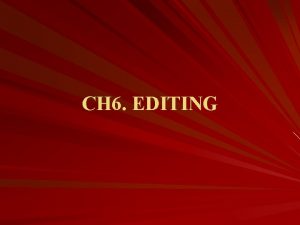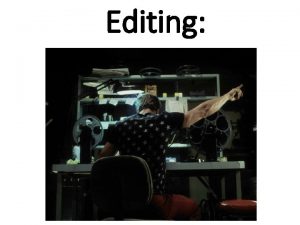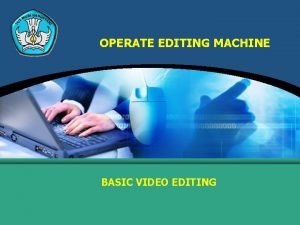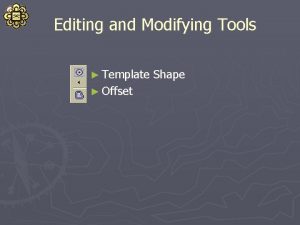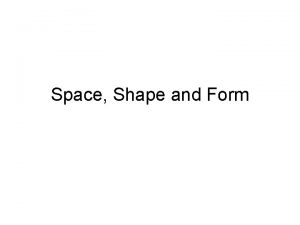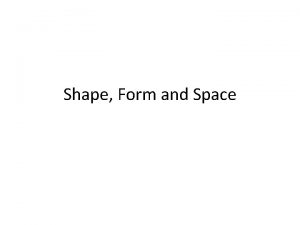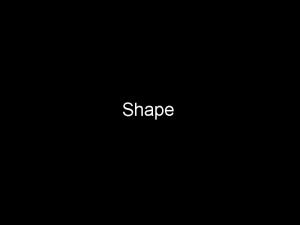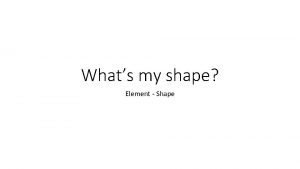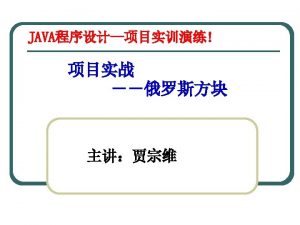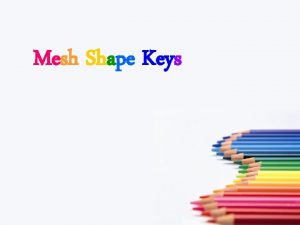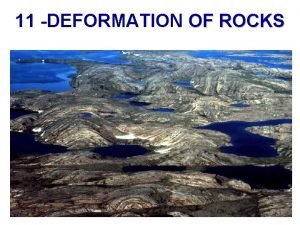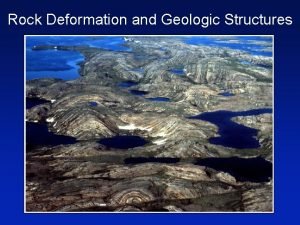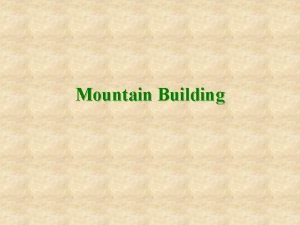Detail Preserving Shape Deformation in Image Editing SIGGRAPH













![Image Synthesis � Use Graph. Cut [Kwatra et al. 2003] ◦ Generate patches individually, Image Synthesis � Use Graph. Cut [Kwatra et al. 2003] ◦ Generate patches individually,](https://slidetodoc.com/presentation_image_h/77682a27ea520caec13829e877033087/image-14.jpg)














- Slides: 28

Detail Preserving Shape Deformation in Image Editing SIGGRAPH 2007 Hui Fang and John C. Hart

Abstract � We propose an image editing system ◦ Preserve its detail and orientation by resynthesizing texture from the source ◦ Patch-based texture synthesis that aligns texture features with image features

Introduction �A novel image editing system that allows a user to select and move one or more image feature curves ◦ Replacing any texture stretched by the deformation with texture resynthesized �Anisotropic feature-aligned texture synthesis step to preserve texture detail �Distortion to the texture coordinates for each patch to align the target image features �Graph. Cut textures [Kwatra et al. 2003]

Introduction �A new method that distorts the coordinates of patch ◦ Image Analogies [Hertzmann et al. 2001] can synthesize a texture to adhere to a given feature line �Yields more high-frequency noise unlike modern patchbased synthesis ◦ Image Quilting [Efros and Freeman 2001] could fill different silhouettes with a texture �Boundary patches appeared to repeat ◦ Feature matching and deformation for texture synthesis [Wu and Yu 2004] distorted neighboring patches to connect their feature lines �Not as global as what us did

Overview � Deformation ◦ Draw feature curves in the source image, and then move them to their desired destination positions � Curvilinear Coordinates ◦ Define curvilinear coordinates using curve tangent vectors & Euler integration � Textured Patch Generation ◦ A pair of curvilinear coordinate is generated ◦ Texture synthesis over the destination grid from source � Image Synthesis ◦ Finalize the synthesis via Graph. Cut

Deformation p'i(t) pi(t) D(p'f) = pf – p'f D(∂I’) = 0

Deformation Original Deformed

Curvilinear Coordinates p'i(t) T'

Curvilinear Coordinates � Since the parametrization of each feature curve is arbitrary, one can encounter global orientation inconsistencies ◦ Calculate separate tangent field for each curve then use only the field which is the closest � We integrate these diffused tangents to construct a local curvilinear coordinate system extending from any chosen “origin” pixel

Curvilinear Coordinates p'i(t) k j

Curvilinear Coordinates � Time-step ɛ=1 ◦ 30 ~ 40 pixels along spines (j direction) ◦ 15 ~ 30 pixels wide ribs (k direction) ◦ Two pixels short of nearby feature curve to prevent overlapping � Smooth the coordinates with several Laplacian iterations ◦ λ = 0. 7 ◦ Removes singularities and self-intersections that can occur ◦ Does not completely solve the problem (Not very noticeable)

Curvilinear Coordinates

Textured Patch Generation � Source origin q 0, 0 = D(q'0, 0) � Bilinear image filter to find the color at the source � Unit-radius cone filter centered at each destination to accumulate the synthesized texture ◦ Small reduction in the resolution of the resynthesized texture detail
![Image Synthesis Use Graph Cut Kwatra et al 2003 Generate patches individually Image Synthesis � Use Graph. Cut [Kwatra et al. 2003] ◦ Generate patches individually,](https://slidetodoc.com/presentation_image_h/77682a27ea520caec13829e877033087/image-14.jpg)
Image Synthesis � Use Graph. Cut [Kwatra et al. 2003] ◦ Generate patches individually, using a priority queue to generate first patches whose origin pixel is closest to the feature curve and adjacent to a previously synthesized patch ◦ Generate a pool of candidate textured patches synthesized from source patches grown from origins randomly chosen from an 11× 11 pixel region surrounding the point D(q'0, 0) ◦ Choose one with the least overlapping difference with previously synthesized neighboring patches

Image Synthesis � Selected patch merges into destination via Graph. Cut � Use Poission Image Editing when the seam produces by Graph. Cut is unsatisfactory

Scale Adaptive Retexturing � The deformation field D can potentially compress a large source area into a small target area ◦ Cause blocky artifacts and seams ◦ Occur when the origin pixels of neighboring patches in the target map to positions in the source with different texture characteristics � Can be overcome by altering the texture synthesis sampling

Scale Adaptive Retexturing

Scale Adaptive Retexturing � We detect these potential problems with a (real) compression field C' ◦ Clamp the compression field to values in [1, 3] to limit its effect ◦ The “spine” length and “rib” breadth of patches are reduced by C'(x, y)

Scale Adaptive Retexturing

Results � Accelerated the construction of source feature curves by using portions of the segmentation boundary produced by Lazy Snapping [Li et al. 2004] ◦ Feature curves do not need to match feature contours exactly, as deformed features were often aligned by the texture search � Used the ordinary Laplacian deformation for interactive preview ◦ Denoted some feature curves as “passive” to aid texture orientation

Results � Filtering used for curvilinear grid resampling removes some of the high frequency detail ◦ Could be recovered by sharpening with histogram interpolation and matching [Matusik et al. 2005]

Results

Results

Results

Failure case

Results � Sharp image changes (like shading changes) should identified by feature curves ◦ Lack of feature curves will cause unrealistic discontinuities in the result � Poisson artifacts image editing hides some of these ◦ by softly blending the misaligned features

Results Measured on a 3. 40 GHz Pentium 4 CPU (31 x 31 search domain for beach)

Conclusion � Stretched texture details can be adequately recovered by a local retexturing around userdefined feature curves � Assumes that the orientation of texture detail of an image is related to the orientation of nearby feature curves � Matting can be used to eliminate unwanted artifacts (Fig. 5) � In practice the success of this approach depends primarily on the selection of the feature curves ◦ The most promising direction of future work in this topic would be to add the automatic detection and organization of image feature curves
 Compliance and stiffness
Compliance and stiffness Reviews data for consistencies.
Reviews data for consistencies. Linear editing vs non linear editing
Linear editing vs non linear editing Siggraph
Siggraph Siggraph
Siggraph Siggraph
Siggraph Illumination monaco
Illumination monaco C0texture
C0texture Siggraph
Siggraph Major detail
Major detail Example of major point
Example of major point Embedded deformation for shape manipulation
Embedded deformation for shape manipulation Gangnet
Gangnet Seamless fusion
Seamless fusion Graphics and multimedia software definition
Graphics and multimedia software definition Ecology preserving the animal kingdom
Ecology preserving the animal kingdom Preserving your credit
Preserving your credit Chapter 8 preserving your credit
Chapter 8 preserving your credit Revealing information while preserving privacy
Revealing information while preserving privacy Orthogonal metrix
Orthogonal metrix Preserving statistical validity in adaptive data analysis
Preserving statistical validity in adaptive data analysis Structure-preserving neural style transfer
Structure-preserving neural style transfer Preserving food
Preserving food Purpose of preserving food
Purpose of preserving food Airfoil nomenclature
Airfoil nomenclature Shape matching and object recognition using shape contexts
Shape matching and object recognition using shape contexts Bolongie
Bolongie Convex shape image
Convex shape image What is line of symmetry in math
What is line of symmetry in math
